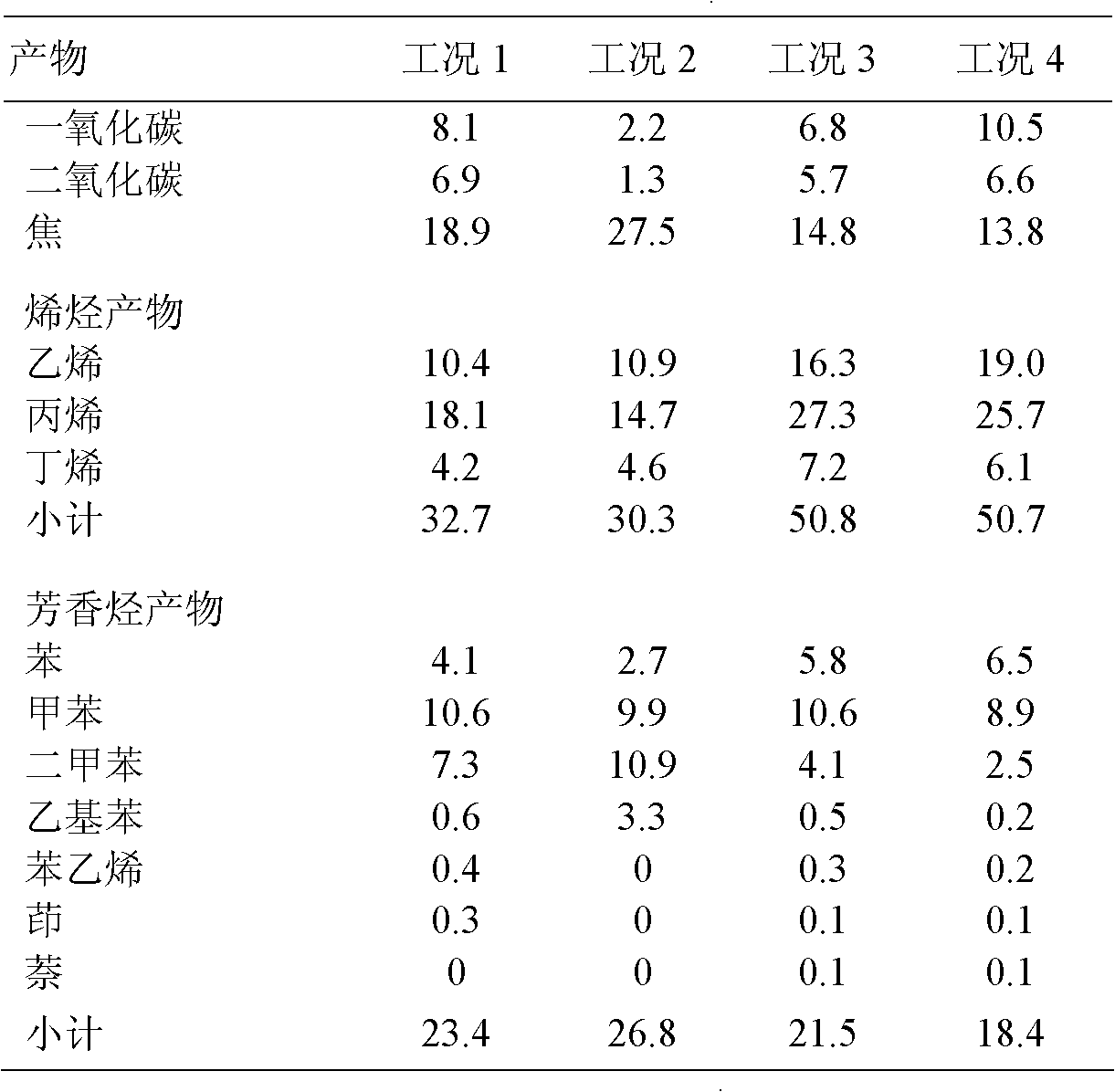Two-step method for preparing olefin and aromatic hydrocarbon by catalyzing and upgrading bio-oil
A bio-oil and aromatic hydrocarbon technology, applied in chemical instruments and methods, hydrocarbon production from oxygen-containing organic compounds, physical/chemical process catalysts, etc., can solve the problems of too fast catalyst deactivation and low yield of hydrocarbons, etc. Achieve the effect of improving stability and improving economy
- Summary
- Abstract
- Description
- Claims
- Application Information
AI Technical Summary
Problems solved by technology
Method used
Image
Examples
Embodiment 1
[0022] (1) The water-phase bio-oil is continuously injected into the selective hydrogenation reactor with a high-pressure pump, and the mass space velocity is 3h -1 , a single catalyst bed is used for catalysis, Ru / C is the catalyst, hydrogen is the carrier gas, the temperature is 125°C, and the pressure is 5.2MPa. After the test, the hydrogenation liquid product is collected.
[0023] (2) The hydrogenation product is injected into the zeolite catalytic reactor with an atmospheric pump, and the mass space velocity is 11.7h -1 , HZSM-5 was used as the catalyst, helium was used as the carrier gas, and the temperature was 600 °C. The collected product was analyzed by GC / MS and GC-TCD / FID, and the carbon yield of the product is shown in Table 1 (working condition 1).
Embodiment 2
[0025] (1) The water-phase bio-oil is continuously injected into the selective hydrogenation reactor with a high-pressure pump, and the mass space velocity is 3h -1 , The catalysis adopts double catalyst bed. The water-phase bio-oil first passes through a bed composed of Ru / C catalyst, and the operating conditions of the bed are as follows: hydrogen is the carrier gas, the temperature is 125°C, and the pressure is 10MPa. Then it passes through a bed composed of Pt / C catalyst. The operating conditions of the bed are as follows: hydrogen is the carrier gas, the temperature is 250°C, and the pressure is 10MPa. After the test, the hydrogenation liquid product is collected.
[0026] (2) The hydrogenation product is injected into the zeolite catalytic reactor with an atmospheric pump, and the mass space velocity is 11.7h -1 , HZSM-5 was used as the catalyst, helium was used as the carrier gas, and the temperature was 400 °C. The collected product was analyzed by GC / MS and GC-TCD / F...
Embodiment 3
[0028] (1) The water-phase bio-oil is continuously injected into the selective hydrogenation reactor with a high-pressure pump, and the mass space velocity is 3h -1 , The catalysis adopts double catalyst bed. The water-phase bio-oil first passes through a bed composed of Ru / C catalyst, and the operating conditions of the bed are as follows: hydrogen is the carrier gas, the temperature is 125°C, and the pressure is 10MPa. Then it passes through a bed composed of Pt / C catalyst. The operating conditions of the bed are as follows: hydrogen is the carrier gas, the temperature is 250°C, and the pressure is 10MPa. After the test, the hydrogenation liquid product is collected.
[0029] (2) The hydrogenation product is injected into the zeolite catalytic reactor with an atmospheric pump, and the mass space velocity is 11.7h -1 , HZSM-5 was used as the catalyst, helium was used as the carrier gas, and the temperature was 600 °C. The collected product was analyzed by GC / MS and GC-TCD / F...
PUM
 Login to View More
Login to View More Abstract
Description
Claims
Application Information
 Login to View More
Login to View More - R&D
- Intellectual Property
- Life Sciences
- Materials
- Tech Scout
- Unparalleled Data Quality
- Higher Quality Content
- 60% Fewer Hallucinations
Browse by: Latest US Patents, China's latest patents, Technical Efficacy Thesaurus, Application Domain, Technology Topic, Popular Technical Reports.
© 2025 PatSnap. All rights reserved.Legal|Privacy policy|Modern Slavery Act Transparency Statement|Sitemap|About US| Contact US: help@patsnap.com

